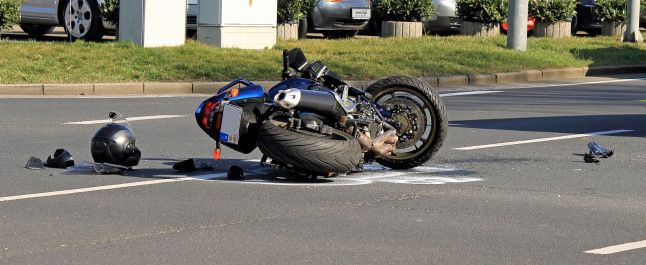Motorcycle Fatalities Rise in Oklahoma Despite Drop Nationally

Riding season for Oklahoma motorcyclists is arriving with conflicting news: The state saw an increase in fatalities from motorcycle accidents in 2013 despite a nationwide decrease.
The Governors Highway Safety Association is projecting a 7 percent drop in the number of traffic deaths connected with motorcycles in 2013, based on figures recorded the first nine months of the year.
Thirty-five states reported declines, with a total of 3,638 motorcycle-related deaths the first nine months of 2013 compared with 4,046 in 2012, a 10 percent decrease.
The national decline is attributed in part to rainy and cold weather during early 2013 that likely kept most people off their motorcycles. In comparison, the first few months of 2012 brought warm weather and an early riding season.
Oklahoma, however, was among 15 states that reported an increase in motorcycle fatalities in 2013. The state reported 74 motorcycle deaths in the first nine months last year, compared with 67 for the same time frame in 2012, a 10 percent increase.
From 2008 to 2012, motorcyclist fatalities in Oklahoma ranged from a high of 108 in 2009 to a low of 78 in 2010, according to the National Highway Traffic Safety Administration.
The most startling statistic shows that the large majority of those who died in motorcycle crashes weren’t wearing helmets. Under state law, only riders under 18 are required to wear safety helmets. IN each of the last three years, the majority of motorcyclists killed in Oklahoma crashes weren’t wearing helmets, according to federal figures for each of the last five reporting years:
- 78 killed in 2010, 66 not wearing helmets.
- 98 killed in 2011, 79 not wearing helmets.
- 85 killed in 2012, 63 not wearing helmets.
Motorcycles are inherently dangerous because they’re more difficult to control than a passenger vehicle and riders have nothing protecting them from the road in crashes. In 2011, for instance, motorcycle crashes resulted in six times more deaths per registration than passenger vehicles, according to the Governors Highway Safety Association.
Passenger cars also were twice as safe in 2011 compared with 1997, but motorcycle-crash fatality rates didn’t change in 15 years.
The report points out that motorcycle-related deaths can be reduced through long-term measures such as state efforts to increase helmet use, reduce speeding, cut back drinking and driving, train motorcyclists and ensure proper licensing and educate drivers to share the road.
Typically, motorcyclists are safety conscious, abiding by traffic laws and speed limits. Because of the size of motorcycles, though, motorists often fail to see them and are likely to misjudge their speed, resulting in crashes that could be prevented if they were paying attention.
Share the Road initiatives across the country encourage motorists to be on the lookout for riders and to understand that motorcyclists have an equal right to the road.
Blog CATEGORIES
Let's Talk About It
Speak with an experienced attorney at no cost to you

